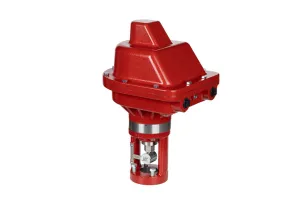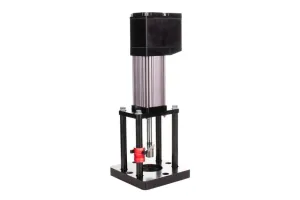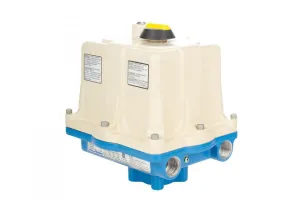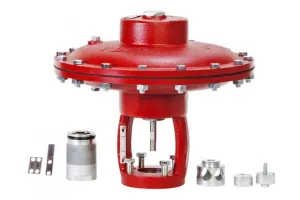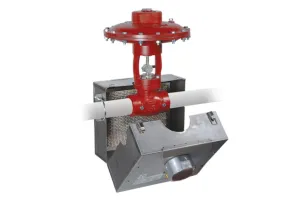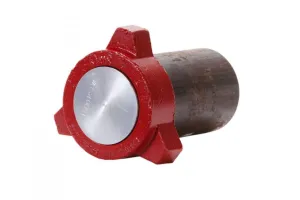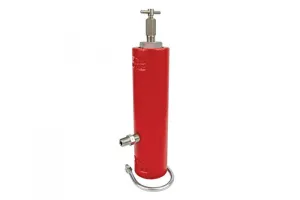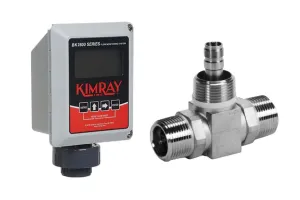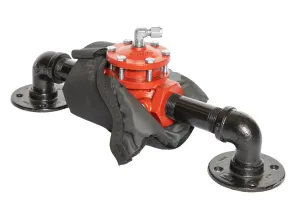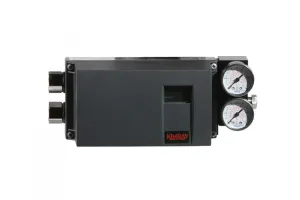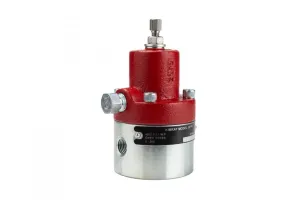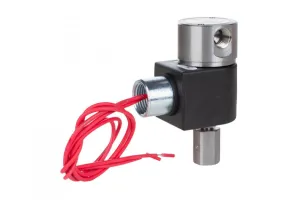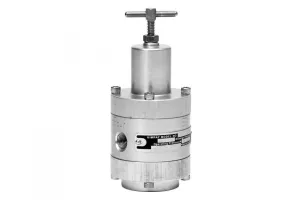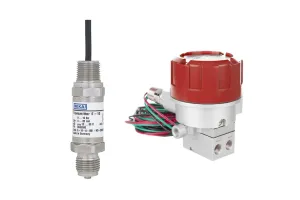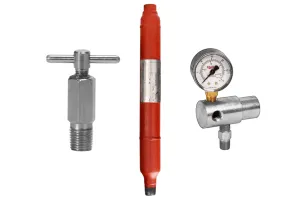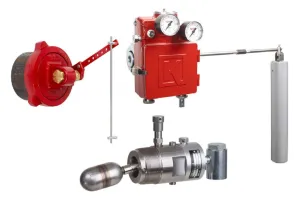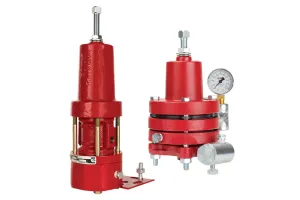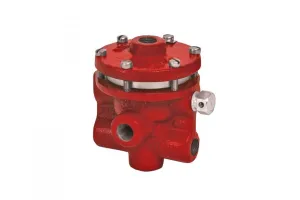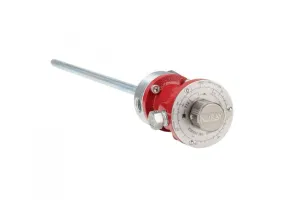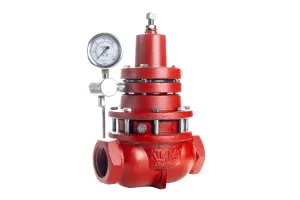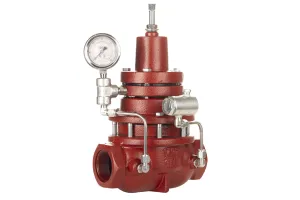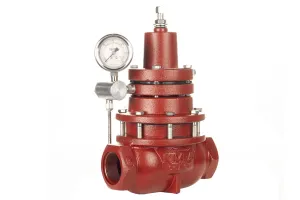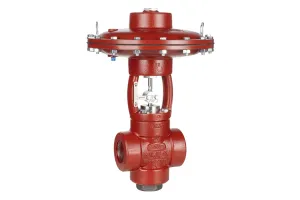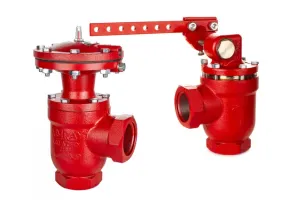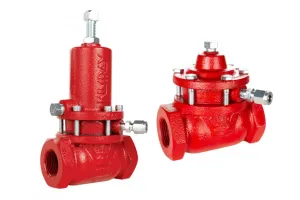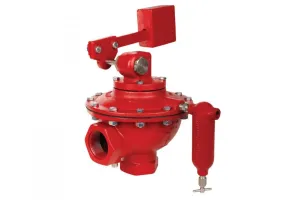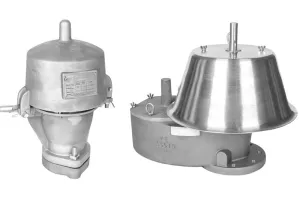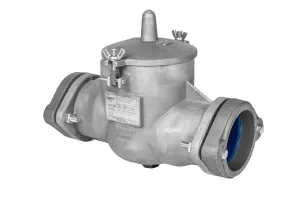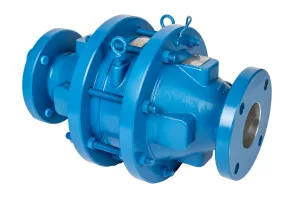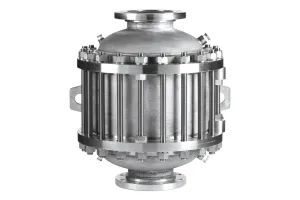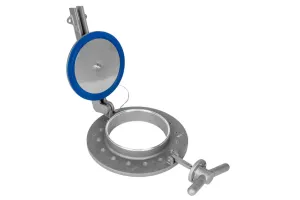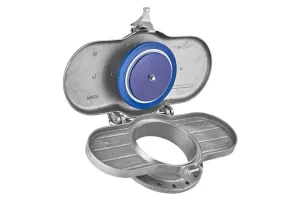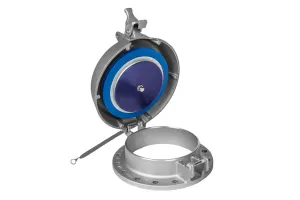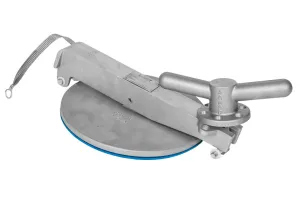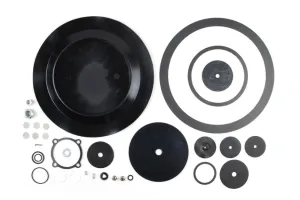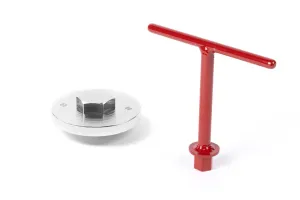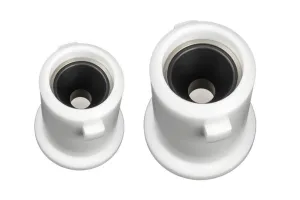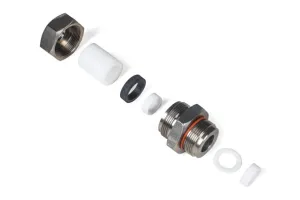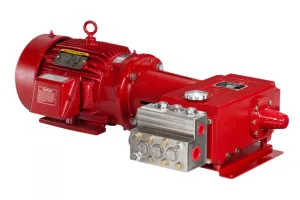In oil and gas production, freezing pipes aren’t just inconvenient — they’re costly. Cold weather can shut down wells, damage equipment, and create serious safety risks.
In this video, we’ll examine this challenge, explain why traditional fiberglass insulation often fails, and show how Kimray Insulated Covers provide a more reliable, safer, and longer-lasting solution.
_08.jpg)
Cause of Freezing
There are two main causes of freezing in control valves, instrumentation, and sensing lines: ambient freezing temperatures and the Joule-Thomson Effect.
Joule-Thomason (JT) Effect–
If the JT effect from large pressure drops is the primary factor causing freezing of your valves, heat generation is likely your best option rather than insulation.
Insulation alone will typically not solve this problem but only make it worse by actually insulating the cold inside the equipment.
![]() Cold Weather–
Cold Weather–
If freezing ambient temperatures are the primary factor causing freezing of your valves, insulation can often provide enough heat retention to prevent freezing.
Insulation Options in Oil & Gas
Oil and gas producers have long turned to insulation as a way to prevent freezing pipes and equipment during cold weather. Traditionally, fiberglass insulation has been the go-to choice because it’s readily available, relatively inexpensive, and carries a high insulation rating (R-value).
But while fiberglass looks good on paper, its performance in real-world conditions often falls short.
Kimray Insulated Covers, which use closed-cell polyethylene foam instead of fiberglass, are a superior solution for long-lasting freeze protection.
Below are some of the most common challenges producers face with fiberglass insulation and how Kimray insulated covers provide a better solution.
Fiberglass vs Insulated Covers
Protection from the Elements
Fiberglass Insulation–
Fiberglass insulation is extremely vulnerable to weather. Exposure to wind, rain, and snow quickly compromises its ability to perform.
Insulated Covers–![]() Kimray Insulated Covers, on the other hand, are built for durability. Each cover has an FR–treated poly shell that is chemical, UV, and abrasion resistant. The insulation is aluminum-backed, which means
Kimray Insulated Covers, on the other hand, are built for durability. Each cover has an FR–treated poly shell that is chemical, UV, and abrasion resistant. The insulation is aluminum-backed, which means
- On the outside, it repels wind, rain, snow, dust and dirt
- And on the inside, it reflects heat back into the pipe or valve, keeping systems warmer and reducing freezing risk.
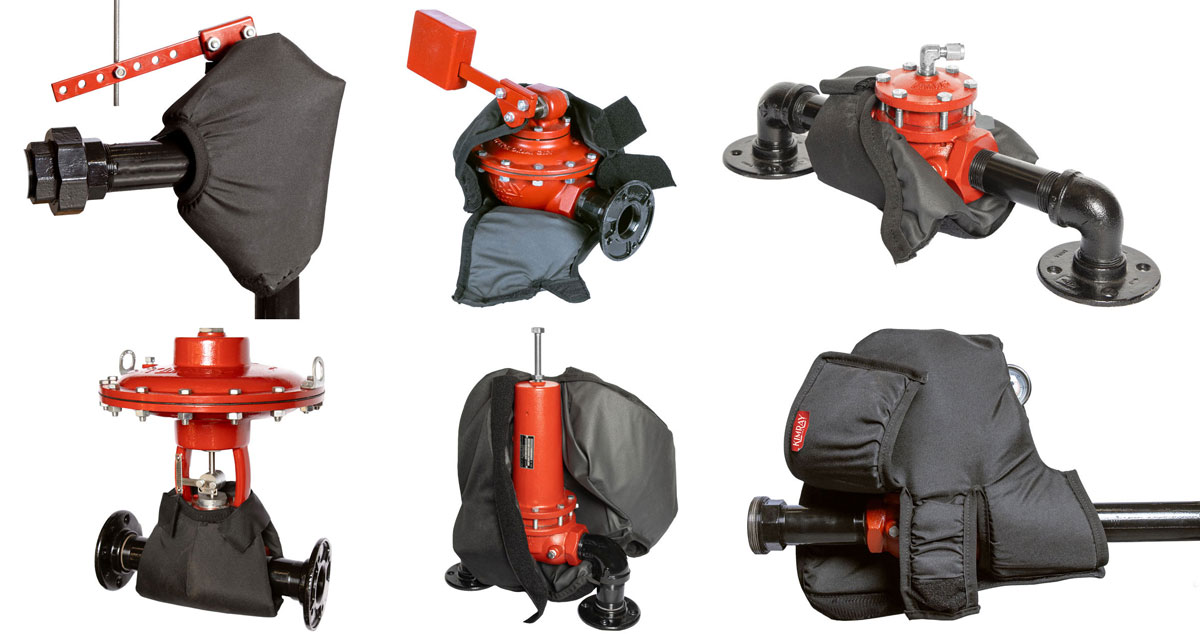
![]() This outer shell also protects it from wildlife and human damage. Rodents and insects often chew through exposed fiberglass insulation to create nests, and operators often inadvertently compromise it by stepping on it or leaning against it.
This outer shell also protects it from wildlife and human damage. Rodents and insects often chew through exposed fiberglass insulation to create nests, and operators often inadvertently compromise it by stepping on it or leaning against it.
![]() The durable shell on Insulated Covers is built to resist abrasion and wear and protect the foam core against intrusion. Rodents don’t find it as enticing as fiberglass insulation, and it can be stepped on or leaned against without compromising its integrity.
The durable shell on Insulated Covers is built to resist abrasion and wear and protect the foam core against intrusion. Rodents don’t find it as enticing as fiberglass insulation, and it can be stepped on or leaned against without compromising its integrity.
Compression and R-Value
Fiberglass Insulation–
Fiberglass insulation depends on air pockets to maintain its R-value. When it’s compressed—whether during installation or normal use—its effectiveness drops significantly.
Insulated Covers–![]() Insulated Covers use closed-cell polyethylene foam, that has a higher R-value inch-for-inch than traditional fiberglass insulation.
Insulated Covers use closed-cell polyethylene foam, that has a higher R-value inch-for-inch than traditional fiberglass insulation.
![]() The foam cannot be compressed in the same way fiberglass can, making it more reliable. Because of its efficiency, covers can remain thin, flexible, and useful even in tight spaces and around small valves.
The foam cannot be compressed in the same way fiberglass can, making it more reliable. Because of its efficiency, covers can remain thin, flexible, and useful even in tight spaces and around small valves.
Moisture Absorption
Fiberglass Insulation–
Moisture destroys fiberglass insulation. It easily absorbs water, which leads to multiple problems:
- Loss of insulation effectiveness — once saturated, its R-value drops to zero.
- Increased freezing risk — wet fiberglass insulation not only doesn't prevent freezing; it can actually promote it.
- Corrosion under insulation — constant moisture against pipes leads to corrosion, often hidden until damage is severe.
- Added weight — over time, fiberglass insulation becomes waterlogged, heavy, and difficult for operators to handle.
Insulated Covers–![]() Kimray Insulated Covers are hydrophobic, meaning they do not absorb water. Their performance is not reduced by rain, snow, or condensation. This means no water logging, no added weight, and no corrosion hiding underneath it.
Kimray Insulated Covers are hydrophobic, meaning they do not absorb water. Their performance is not reduced by rain, snow, or condensation. This means no water logging, no added weight, and no corrosion hiding underneath it.
Installation, Safety & Reusability
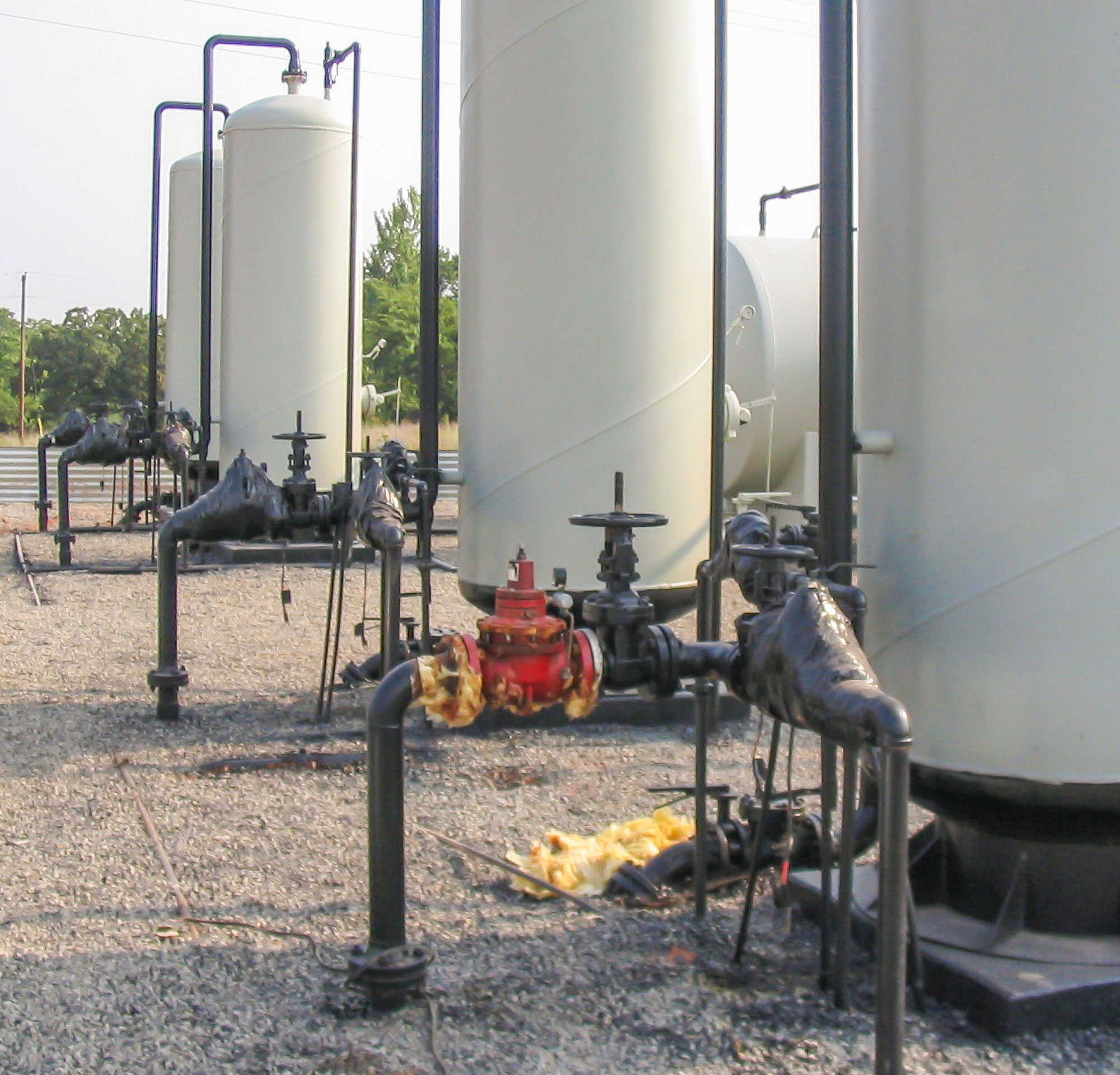 Fiberglass Insulation–
Fiberglass Insulation–
Fiberglass insulation is vulnerable to the environment and must be protected. Installing fiberglass insulation typically requires cutting, drilling, and fastening tin cladding for protection. This process can damage equipment and introduce sharp edges around your site. Fiberglass also causes skin irritation and can even create respiratory issues when handled.
Fiberglass insulation is difficult to remove and reinstall. This makes maintenance, inspections, and LDAR scans more time-consuming and costly. And each time it’s handled, it loses more of its insulating effectiveness.
Insulated Covers–![]() Kimray Insulated Covers avoid all these issues. With industrial-grade Velcro closures, they are easy to install and require no cutting, drilling, or tin cladding, reducing the risk of injury.
Kimray Insulated Covers avoid all these issues. With industrial-grade Velcro closures, they are easy to install and require no cutting, drilling, or tin cladding, reducing the risk of injury.
![]() The industrial-grade Velcro closures on our Insulated covers are rated for 20,000 pulls. They can be quickly installed, removed, and reapplied without losing performance. That means easier access to equipment and faster turnaround on inspections.
The industrial-grade Velcro closures on our Insulated covers are rated for 20,000 pulls. They can be quickly installed, removed, and reapplied without losing performance. That means easier access to equipment and faster turnaround on inspections.
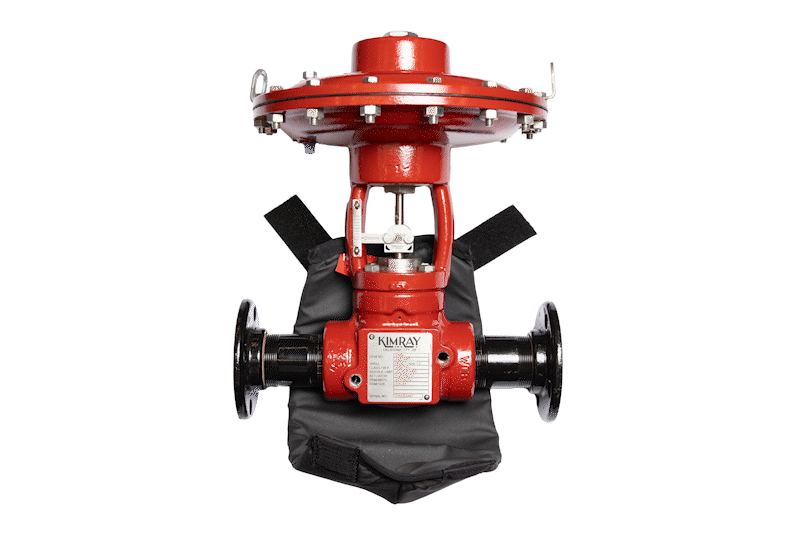
Added Benefits of Insulated Covers
Beyond cold weather protection, Insulated Covers provide a few year-round benefits.
![]() Ambient Heat Spike Protection:
Ambient Heat Spike Protection:
They protect against ambient heat spikes to maintain process temperature stability in hot weather as well, just like an insulated cup retains temperature (hot or cold).
![]() Dust and Wind Protection:
Dust and Wind Protection:
They shield ports and components from debris that could clog or damage equipment in dusty or desert environments.
![]() UV Protection:
UV Protection:
And with more electronic controllers in the field, they help safeguard electronics and digital displays from sun damage.
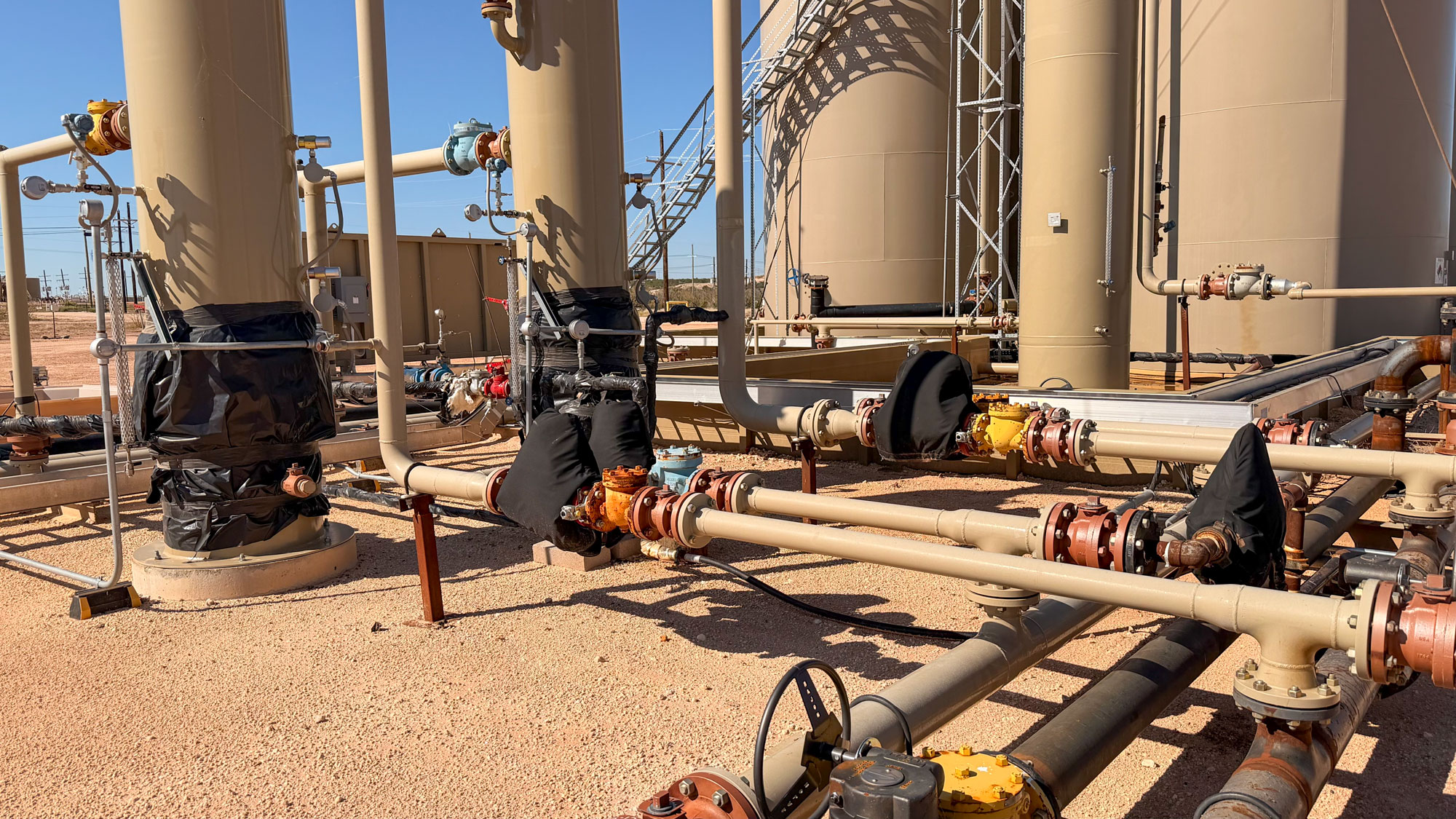
Fiberglass insulation has served the industry for decades, but is limited by moisture absorption, corrosion, compression, safety concerns, and short service life.
Kimray Insulated Covers solve those problems. They stay lightweight, resist damage, repel the elements, and deliver consistent performance season after season.
Contact your local Kimray representative today to discuss how insulated covers can protect your operation.
